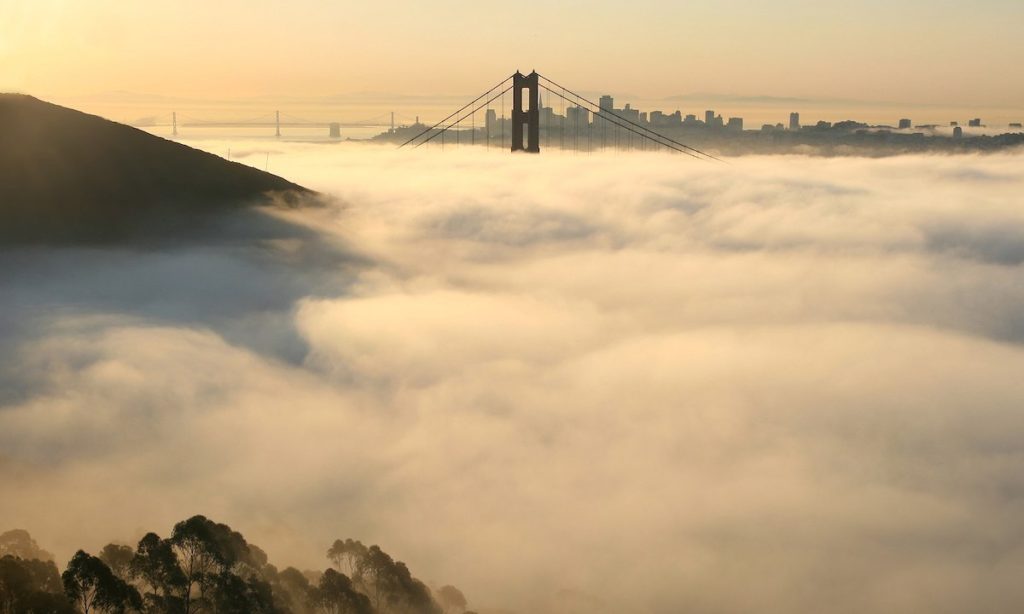
“The Uninhabitable Earth” isn’t just a book title, it’s a warning.
A new study and a new book both argue that the worst-case scenario for global warming would literally render the planet uninhabitable.
The book is entitled “The Uninhabitable Earth: Life After Warming” and is written by New York Magazine editor David Wallace-Wells; it is an expansion of his controversial viral article published in July 2017 with the same title. As of Feb. 26, it is number 11 on the Amazon best-seller list — a rarity for any climate book, but perhaps another sign of the growing interest in strong climate action.
The book, published just last week, makes the case that without dramatic climate action, we are headed for catastrophic warming of 7°F (4°C) above pre-industrial temperatures by 2100 — a world of ever-worsening megadroughts and endless food shortages.
But, as Wallace-Wells warns, even the unlikely worst-case warming scenario of 14.4°F (8°C) is possible if we keep on a path of high carbon dioxide (CO2) emissions — and if the climate response is at the high end of the estimated range. Warming of this magnitude would essentially render the world uninhabitable, where little arable land survives and the oceans eventually rise more than 200 feet.
Meanwhile, a new study published Monday in Nature Geoscience led by NASA senior scientist Tapio Schneider looks at one way that the worst-case scenario could get much worse.
The study looks at what happens if we triple atmospheric CO2 concentrations to 1200 parts per million (ppm) from their current level of 410 ppm. This is unlikely, but still possible given current rates of emissions, especially if we trigger key amplifying feedbacks — such as the release of vast quantities of CO2 from the melting Arctic permafrost.
In such a world, warming might be expected to be 11°F (6°C) or even 14.4°F (8°C). But the new study finds that at 1200 ppm, stratocumulus clouds (which are similar to fog) that help cool the planet “become unstable and disappear, triggering a spike in global warming” that would add a further stunning 14.4°F (8°C) of global warming.
The study explains that stratocumulus clouds “cover about 20 percent of subtropical oceans” especially the eastern portion off the coasts of California or Peru. These clouds “cool and shade the earth as they reflect the sunlight that hits them back into space.”
Losing them would likely bring total warming beyond 25°F (14°C), a truly uninhabitable earth.
This scenario may seem impossible, but it’s worth noting that in the early Eocene, 52-56 million years ago, the Earth’s temperature was in that range — both the Arctic and Antarctic were ice-free — and CO2 levels in the air were only in the range of 1000 to 1400 ppm.
Indeed, the study itself points out this so-called previous “Hothouse Earth” millions of years ago may have been driven in part by a loss of stratocumulus clouds — and that it could happen again “in the future if CO2 levels continue to rise.”
The study’s findings are just one look at this dangerous feedback loop, and some scientists argue more work needs to be done to examine the likelihood of this scenario. This is because climate models are complex, particularly when it comes to clouds.
Commenting on the study, leading climate expert Michael Mann told ThinkProgress in an email that, “The findings are plausible. Tapio Schneider is not a scientist to be dismissed lightly.” But he noted that, “Even if the findings are correct (and that would require replication by several independent research teams), this threshold is only hit at 1200 ppm CO2 in the atmosphere.”
Finally, Mann warned (original emphasis), “We can’t afford to get ANYWHERE NEAR 1200 ppm CO2.”
And reaching carbon dioxide levels well below that would still trigger catastrophic consequences. He explained that just 7°F (4°C) of warming “would constitute the end of civilization as we know it.”
It can be difficult, however, to fully grasp the scale of warming when dealing with what feels like abstract numbers. Indeed, one of Wallace-Wells’ points is that “because the numbers are so small, we tend to trivialize the differences between one degree [Celsius] of warming and two, two degrees and four.”
So Wallace-Wells tries to make what seems trivial and abstract as concrete and visceral as possible with chapter titles such as: “Heat Death,” “Hunger,” “Drowning,” “Wildfire,” “Unbreathable Air,” “Plagues of Warming,” “Economic Collapse,” and “Climate Conflict.”
And halfway through the book he says, in all caps, “If you have made it this far, you are a brave reader.” He admits that any of those chapters contains, “enough horror to induce a panic attack in even the most optimistic of those considering it.”
But, he adds, the science makes clear that “You are not merely considering it; you are about to embark on living it. In many places, we already are.”
In recent years, the science has underscored two key facts that further support this point. First, the climate impacts that come from just one more degree Celsius of warming — for a total of 3.6°F (2°C) warming — will be catastrophic.
Second, the climate system has many feedback loops that threaten to accelerate warming if we trigger them.
One major 2018 study by 16 top climate scientists, for instance, concluded that if we warm the planet 2°C that may be enough to trigger feedbacks that push the planet toward the irreversible “Hothouse Earth.” That would mean catastrophic warming of 9°F (5°C) or more, with widespread dust bowls and rapid sea level rise.
However you describe it, the science makes it increasingly clear that no rational species would allow us to get anywhere near that level of warming. And that’s precisely what makes strong action in the next decade, as envisioned in proposals such as the Green New Deal, a moral imperative.